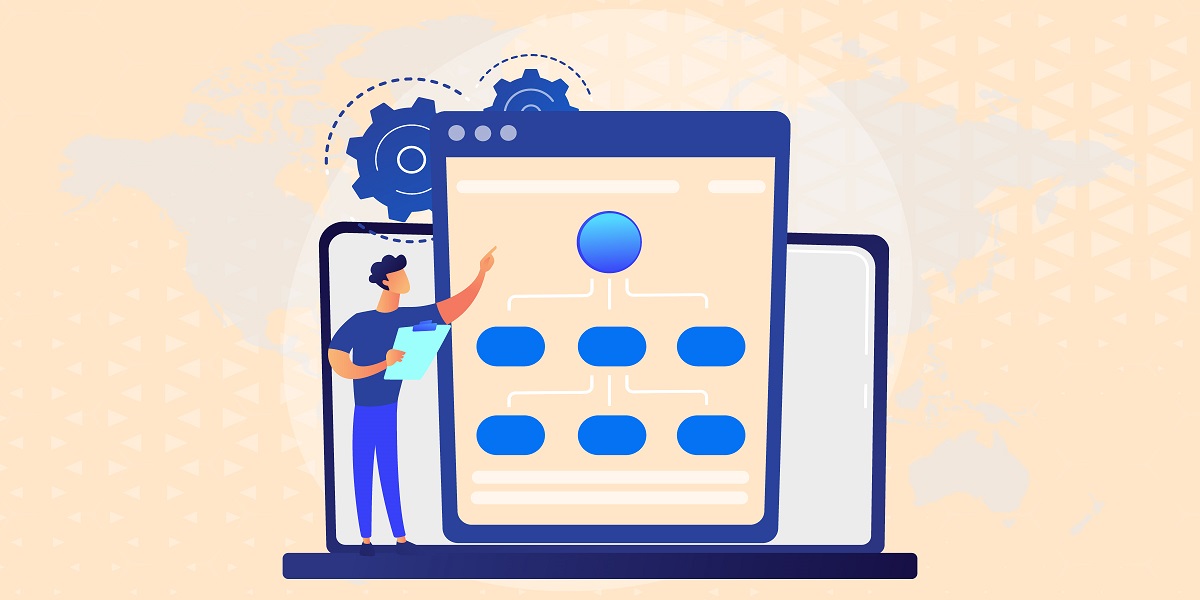What are the Different Types of Functional Testing?
Technology | 24-08-2023 | Batista Dave

Functional tests ensure that your software app works as per desired specifications. In other words, it checks the software app's features, components interactions, and reactions to varying situations. Therefore, there are different types of functional testing to test each function of the software app. The developers prioritize some of these types depending on the application's nature.
So, if you like to know more about functional tests, let us explore them through the following topics:
- What are functional tests?
- Its benefits
- Types of functional test
- Steps to perform Functional tests
- Functional test best practices
What is functional testing?
The functional test is a type of QA software testing that checks if the software app works according to the required specifications. As a result, the QA engineers verify each element in the software app to know if their functionality meets the desired needs. In other words, the QA engineers provide the input and check the output against the functional conditions.
Therefore, functional testing is a black-box technique. It involves testing if the output validates the input provided. Moreover, it focuses on the functionality of the software app rather than its source code. So, it reviews the app's APIs, user interface, security, performance, client and server-side communication.
Besides, with the types of functional testing, you can ensure the features, components, and their interaction all work hand-in-hand to deliver an app that matches the user's demands. Therefore, it checks the system's input and output, its response to multiple workloads, and the user experience to validate that it performs as intended.
You can create a checklist for running functional testing based on your requirements. These requirements help you to conduct the test depending on the nature of the software app and business needs. As a result, you can test the app by documenting your specifications from the functional requirements and business process perspective.
Since we got an idea of functional testing services, let us learn its benefits for more understanding.
What are the benefits of functional testing?
With different types of functional testing, you will get benefits that help you build top-notch apps for your users. Besides, you can top your market by offering the finest app to the real world. Therefore, running functional tests is crucial to improve your app's performance and behavior. The following are the benefits of Functional tests:
Enhance User Experience:
The ultimate of functional tests is to offer the best app that satisfies the users. Therefore, the developers build software apps that meet the needs and demands of the customers. Besides, they ensure the app has a seamless workflow and logical navigation for the users to use.
Ensure Security:
One of the types of functional testing is security testing. It involves testing the security aspects of the app to protect it from cyberattacks and hackers. As a result, it makes the app safe and secure to store data and other confidential information.
Reduce Errors:
With the help of functional tests, you can ensure your app is free of errors and bugs that can lead to complete failure. In other words, it identifies and removes the loopholes in the app's features and components to deliver the finest software app for the end users.
Enhance Functionality:
Functionality testing allows you to spot the issues in your software app. As a result, the developers can do the needful by changing the coding or attributes of the app. Hence, the types of functional testing will help build an app that works to predefined needs.
Maintain Compliance:
You can comply with industrial standards by running functional tests. In other words, it ensures the quality of your software app meets the needs without compromising compliance regulations.
What are the types of functional testing?
The following are the Functional testing types that help meet the needs of your app as per the specified requirements.
Unit Testing:
Unit testing involves developers testing each unit of the software app to know if they match the predefined needs. As a result, it ensures each part of the app works efficiently on its own and delivers the desired output. In other words, it validates each unit and its functionality and builds a solid foundation for the app. Hence, it enhances the app quality and accelerates the development process.
Component Testing:
Component testing is similar to unit testing, except it takes the white-box format to the black-box technique. Therefore, component testing involves testing each component in software and assessing to validate the desired needs. Besides, this is one of the types of functional testing that uses stub and driver to simulate the interaction between the components.
Smoke Testing:
Smoke testing ensures the software app's functionality is stable with a new build. Therefore, when the software builds pass the smoke test, you can take the software for further testing. As a result, it stabilizes the functionality of your software.
Sanity Testing:
Sanity is one of the types of functional testing that comes under regression testing. It takes place after the smoke testing. So, sanity testing checks to ensure the crucial functionality in the app performs well. Besides, it enables the developers to test the app after adding a new feature or changing code.
Integration Testing:
Integration testing ensures the components in the app can work as a group. Therefore, the QA engineers test if the modules in the app interact properly. Besides, it helps them validate that the outcome meets the desired specifications. As a result, this functional testing allows you to spot and remove bugs that disturb the interaction between modules.
Regression Testing:
Regression testing confirms the app functionality is intact with the new addition of features, code changes, or debugging strategies. As a result, it helps the developers to maintain a stable software product for the end users.
Interface Testing:
As the name suggests, interface testing involves checking the interface of the software app. In other words, it tests the elements in the user interface, including the menus, icons, and buttons, to have a logical flow and positive user experience.
API Testing:
Since most businesses have multiple apps and systems, application programming interfaces are crucial to connect them. As a result, with API testing as one of the types of functional testing, the testers can ensure the connection between apps is intact.
User Acceptance Testing:
User Acceptance testing ensures the app offers a positive user experience. In other words, this test involves reviewing the feature flow and fulfilling the customers' needs and expectations.
What are the steps to perform functional testing?
You must follow a structured and systematic step to run the functional testing in software testing. Given below is a step-by-step guide to conducting the Functional test on your app:
Find the Functional Area to Test:
The first step is to identify the areas that need functional testing. It helps the developers learn what the function requires and how it should work. As a result, they will understand the types of functional testing to perform and how to approach it.
Create Test Scenarios:
In this step, the developers provide input that describes the scenarios based on the specifications and needs. They can use these scenarios to verify the output against the functional requirements.
Build Test Data:
The developers create test data based on the test scenarios. They use this data to include the real usage of the system. As a result, we can determine the output within this phase.
Execute Test Case:
This step includes implementing the test case and running testing. You can run different types of functional testing depending on the needs and the app's nature.
Compare:
The last step is to compare the outputs against the predefined functional requirements. In other words, you can compare the actual and expected result.
What are the best practices for functional testing?
Let us go through the best practices for the functional test as follows:
Identify Proper Test Cases:
Ensure you pick the right test cases that need frequent testing, prone to errors, or consume effort and time.
Consistent Test:
Practice robust testing framework and frequent tests to identify errors and bugs in the software app.
Hire Dedicated Team:
Collaborate with a highly experienced and skilled team of developers and QA engineers to run different types of functional testing.
Test on Real User Conditions:
Ensure to test your app under real-user conditions to get accurate results for your testing.
Key Tools to Conduct Functional Testing:
Selenium, Cypress, Appium, Katalon Studio, Apache JMeter, SoapUI, TestComplete.
Conclusion
Functional testing helps make the software development life cycle efficient and robust. It ensures your software app is highly performing and meets all the intended needs. That is why your software needs to run different types of functional testing. It helps you build and deliver the finest app for your end users. So, we hope you gained more understanding of Functional tests in software testing.
FAQ
1. What is functional testing?
Functional testing is a sort of software testing that focuses on ensuring that the functions of a software program work as intended. It involves testing each function by providing input and comparing the actual output to the expected output.
2. What is the goal of functional testing?
The goal of functional testing is to ensure that the software's features and functionalities align with the requirements specified in the project documentation. It aims to validate that the software meets user expectations and performs its intended tasks accurately.
3. What are test cases in functional testing?
Test cases in functional testing are sets of conditions and inputs designed to validate specific functions of the software. Each test case defines the steps to be executed, the expected results, and the actual outcomes.
4. What are the types of functional testing?
Common types of functional testing include:
- Unit Testing
- Integration Testing
- Smoke Testing
- Regression Testing
- User Acceptance Testing (UAT)
- Black Box Testing
- White Box Testing
- Boundary Testing
- Equivalence Partitioning
- Usability Testing
5. How does functional testing differ from non-functional testing?
Functional testing assesses the software's functionality, while non-functional testing evaluates aspects like performance, security, scalability, and usability.
6. What is the difference between manual and automated functional testing?
Manual functional testing involves human testers manually executing test cases, while automated functional testing involves using tools to automate the execution of test cases. Automated testing is faster, repeatable, and suitable for regression testing.
7. What is regression testing?
Regression testing ensures that new code changes or updates do not negatively impact existing functionalities. It involves re-running existing test cases to catch any unintended side effects.
8. How do you prioritize test cases in functional testing?
Test case prioritization depends on factors like the criticality of the function being tested, the likelihood of defects, and the areas that have undergone recent changes.
9. What is exploratory testing?
Exploratory testing is a dynamic approach where testers actively explore the application while simultaneously designing and executing test cases. It's particularly useful for uncovering unexpected defects.

.jpg)

.jpg)
.jpg)
.jpg)
.jpg)
.jpg)


